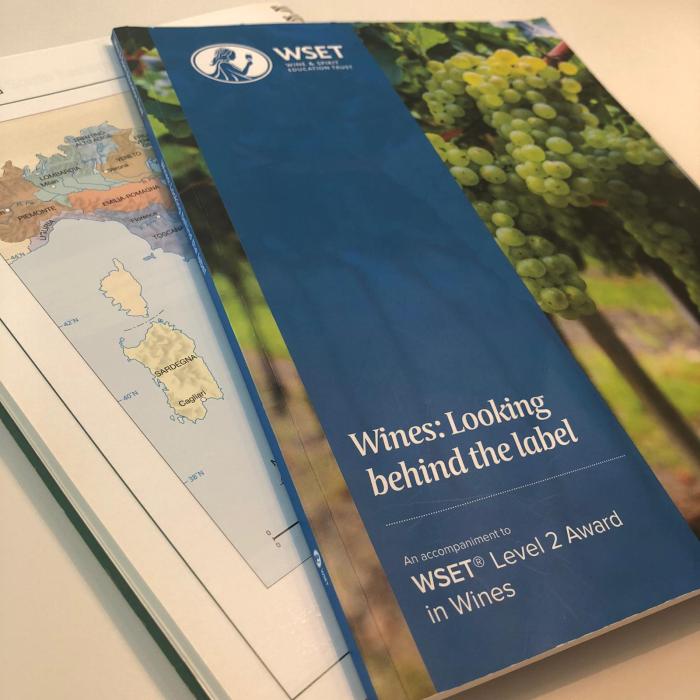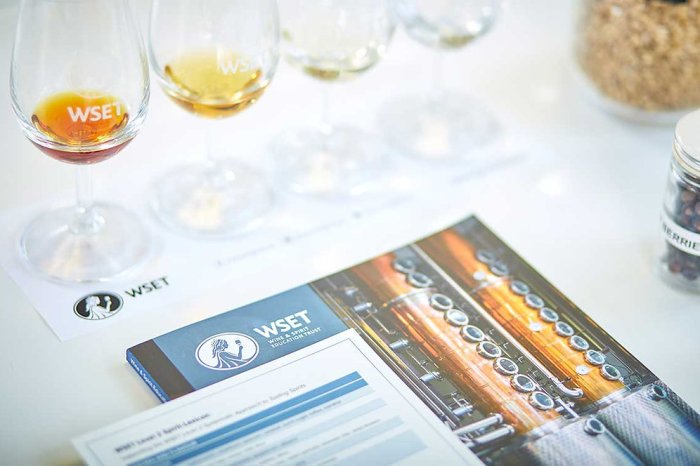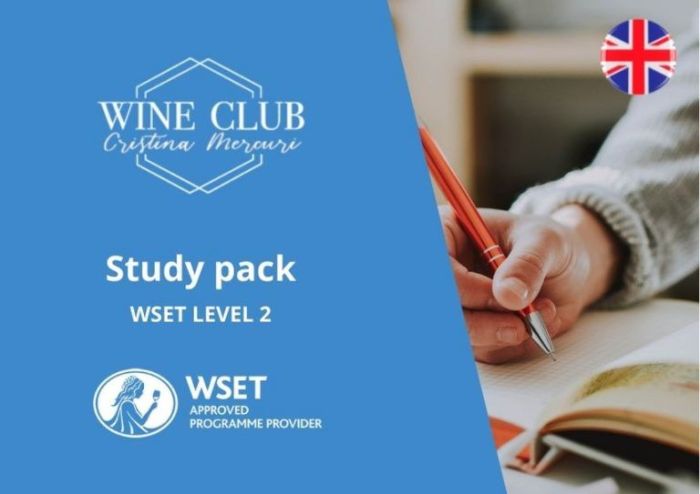Embark on an extraordinary journey with the WSET Level 2 Study Guide, your comprehensive companion to unlocking the secrets of the world of wine. This guide is meticulously crafted for aspiring wine enthusiasts, providing a roadmap to master the fundamentals and elevate your wine knowledge.
Delve into the intricate world of grape varieties, explore the diverse landscapes of wine regions, unravel the intricacies of winemaking techniques, and develop your sensory evaluation skills. With this study guide as your guide, you’ll gain a profound understanding of wine, setting the stage for success in the WSET Level 2 exam.
Introduction: Wset Level 2 Study Guide
The WSET Level 2 Study Guide is an essential resource for individuals seeking to enhance their knowledge and understanding of wines and spirits. This comprehensive guide provides a structured and thorough approach to the subject matter, catering to the needs of wine enthusiasts, industry professionals, and anyone with a keen interest in the world of beverages.
The primary purpose of the WSET Level 2 Study Guide is to equip learners with a solid foundation in wine and spirits knowledge. It covers a wide range of topics, including grape varieties, wine regions, production methods, and tasting techniques.
For those interested in the WSET Level 2 Study Guide, it’s worth noting that while there’s no definitive answer to how tall is Johnny Cade , the focus should remain on the study guide’s comprehensive coverage of wine regions, grape varieties, and winemaking techniques.
By delving into these areas, the guide empowers individuals to make informed decisions about wine and spirit selections, appreciate the nuances of different beverages, and engage in knowledgeable discussions with fellow enthusiasts.
Core Content

The WSET Level 2 study guide covers a wide range of topics essential for understanding the world of wine. These include grape varieties and their characteristics, wine regions and their climates, winemaking techniques, and sensory evaluation of wine.
By delving into these core concepts, students will gain a comprehensive foundation in the fundamentals of wine, enabling them to make informed choices, appreciate the nuances of different wines, and navigate the vast world of wine with confidence.
Grape Varieties and Their Characteristics
The study guide provides an in-depth exploration of the major grape varieties used in winemaking worldwide. Students will learn about the key characteristics of each variety, including its aroma, flavor profile, and growing conditions.
- Red grape varieties: Cabernet Sauvignon, Pinot Noir, Merlot, Syrah/Shiraz, Zinfandel
- White grape varieties: Chardonnay, Sauvignon Blanc, Riesling, Pinot Grigio, Gewürztraminer
Wine Regions and Their Climates
The study guide also covers the major wine regions of the world, examining their unique climates and how they influence the wines produced there.
- Old World wine regions: France, Italy, Spain, Portugal, Germany
- New World wine regions: United States, Australia, New Zealand, South Africa, Chile, Argentina
Winemaking Techniques
Students will gain insights into the various winemaking techniques used to produce different styles of wine. These techniques include:
- Harvesting and grape processing
- Fermentation and maceration
- Aging and maturation
- Blending and finishing
Sensory Evaluation of Wine
Finally, the study guide emphasizes the importance of sensory evaluation in understanding and appreciating wine. Students will learn how to use their senses to identify the key characteristics of wine, including its appearance, aroma, flavor, and texture.
- Visual assessment: Color, clarity, viscosity
- Olfactory assessment: Primary, secondary, and tertiary aromas
- Gustatory assessment: Sweetness, acidity, bitterness, tannins, body
- Aftertaste and finish
Study Methods

Developing effective study strategies is crucial for maximizing your understanding and retention of the WSET Level 2 material. This guide provides a comprehensive approach, incorporating note-taking, memorization techniques, and practice questions to enhance your learning experience.
Effective note-taking involves actively engaging with the material, summarizing key points, and organizing them logically. Consider using different colors, symbols, or diagrams to highlight important concepts and connections. To enhance memorization, employ techniques such as spaced repetition, where you review the material at increasing intervals, or active recall, where you try to retrieve information from memory without looking at your notes.
Practice Questions, Wset level 2 study guide
Regular practice with exam-style questions is essential for assessing your understanding and identifying areas that require further attention. Attempt questions under timed conditions to simulate the actual exam environment. Analyze your answers carefully, noting areas of strength and weakness, and use this feedback to focus your revision efforts.
Exam Preparation
The WSET Level 2 exam is designed to assess your understanding of the key concepts and principles of wine production, styles, and regions. It consists of two parts:
- Multiple-choice questions:50 questions to be completed in 60 minutes, covering all aspects of the syllabus.
- Short-answer questions:6 questions to be completed in 45 minutes, requiring you to demonstrate your knowledge and understanding of specific topics.
Time Management
Time management is crucial for success in the exam. Allocate your time wisely, allowing approximately 1 minute per multiple-choice question and 7.5 minutes per short-answer question. Prioritize answering questions you are confident about first, and revisit the more challenging ones later.
Revision Techniques
Effective revision is essential for exam preparation. Here are some techniques to consider:
- Spaced repetition:Regularly review the material at increasing intervals to strengthen your memory.
- Active recall:Test yourself on the material without referring to your notes to identify areas that need further study.
- Practice questions:Solve past papers or practice questions to familiarize yourself with the exam format and identify areas for improvement.
- Mind mapping:Create visual representations of the material to help you connect and organize information.
Resources

In addition to this study guide, consider supplementing your preparation with the following resources:
- Books:There are several comprehensive books available that cover the WSET Level 2 syllabus in detail. Some popular options include “Wine Grapes” by Jancis Robinson, “The World Atlas of Wine” by Hugh Johnson, and “Wine Folly: The Essential Guide to Wine” by Madeline Puckette and Justin Hammack.
- Online Courses:Numerous online courses provide structured learning programs that cover the WSET Level 2 curriculum. These courses often include interactive exercises, quizzes, and access to expert instructors.
- Wine Tasting Events:Attending wine tastings is an invaluable way to develop your palate and gain practical experience identifying and evaluating different wines. Seek out events hosted by wineries, wine bars, or wine education organizations.
Conclusion

This study guide has provided a comprehensive overview of the WSET Level 2 exam, covering all the essential topics. By following the advice and guidance provided, you can effectively prepare for the exam and achieve your desired results.Remember, consistency and dedication are key to success.
Use this guide as a roadmap to your preparation journey, and you will be well-equipped to face the challenges of the WSET Level 2 exam with confidence.
Questions and Answers
What is the purpose of the WSET Level 2 Study Guide?
The WSET Level 2 Study Guide provides a comprehensive overview of the key concepts and topics covered in the WSET Level 2 Award in Wines.
Who is the target audience for the study guide?
The study guide is designed for individuals who are interested in gaining a deeper understanding of wine, including wine enthusiasts, aspiring wine professionals, and those preparing for the WSET Level 2 exam.
What are the key topics covered in the study guide?
The study guide covers a wide range of topics, including grape varieties, wine regions, winemaking techniques, and sensory evaluation of wine.
How can I use the study guide effectively?
To use the study guide effectively, it is recommended to follow a structured approach, taking notes, practicing questions, and supplementing your learning with additional resources.
What is the format of the WSET Level 2 exam?
The WSET Level 2 exam consists of a multiple-choice paper and a blind tasting.